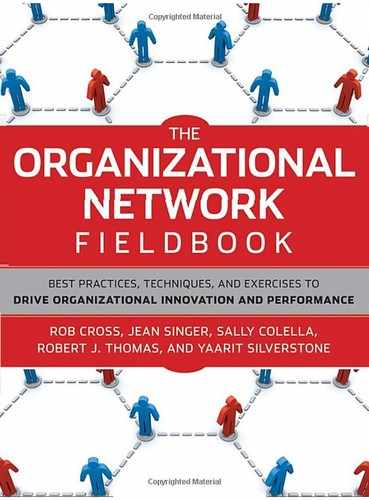15.4. How Has the MRF's Model Performed?
MRF's researchers believe that the most significant outcome of the MRF model of collaborative innovation has been accelerated learning. By sharing discoveries in real time among network members, the scientists can leverage one another's learning in an iterative way, without having to wait months and years for these discoveries to be formally published or patented.
Network analysis enables us to measure this progress. Prior to becoming part of the MRF innovation network, the core labs in the network had not published any patents. Today, five years after the launch of the MRF, the labs have filed 13 patents, and 5 or 6 additional patent applications are being prepared. There has been a similar growth in the publication of academic papers. In the five years prior to becoming part of the MRF, the PIs had published 62 papers. In the five years since the establishment of the MRF, this number has grown to 174, a nearly threefold increase.
But even more striking is the growth in the collaboration networks of the PIs. In the five years prior to the establishment of the MRF, the individual PIs (who were not yet members of this network) had copublished with 147 different collaborators, 45 percent of whom were outside their core institutions, and none of the PIs had worked together. In the five years since, the network has grown to 576 collaborators, 48 percent of whom are outside the PIs' core organizations. On average, each PI has published with more than 90 coauthors. In addition, they are collaborating directly with one another.
Indeed, the map of collaboration networks of MRF scientists since the founding of the MRF shows a dramatic picture of the evolution and growth in collaboration networks. The findings show that not only are MRF scientists working more closely with one another, but they are also expanding their own collaboration networks to encompass other institutions and researchers. The network lens clearly verifies the effectiveness of the MRF's collaboration model and helps them communicate this to stakeholders and funders.
Some of this success might be attributed to the natural evolution of the careers of talented academics. But how much is due to their involvement in the MRF collaboration network? To begin to answer this question, it is useful to compare MRF's PIs with a comparable group of scientists working in related scientific areas. We examined five eminent scientists who did not become part of the MRF but were present at the 2002 Gordon Research Conference on myelin attended by Scott Johnson. In the five years from 1999 to 2004, the combined publication activity of this group was 52 articles. In the past five years, this group has published 124 papers, which represents a respectable increase of more than 200 percent but falls short of the nearly 300 percent increase achieved by MRF scientists. The average number of papers published per year by the MRF network increased from 12 per scientist in 2004 to 36 per year by the end of 2005. For the non-MRF group, this number went from 10 per year to 25. And, with the exception of one individual, the non-MRF group is collaborating on average with a much smaller network of scientists.
But perhaps the most enduring legacy of the MRF case is its clear demonstration of the power of networks for managing science-based organizations. The network lens can create considerable value as a means for building, managing, monitoring, and measuring the success of collaborative innovation models, and for communicating the value of these models to stakeholders.
